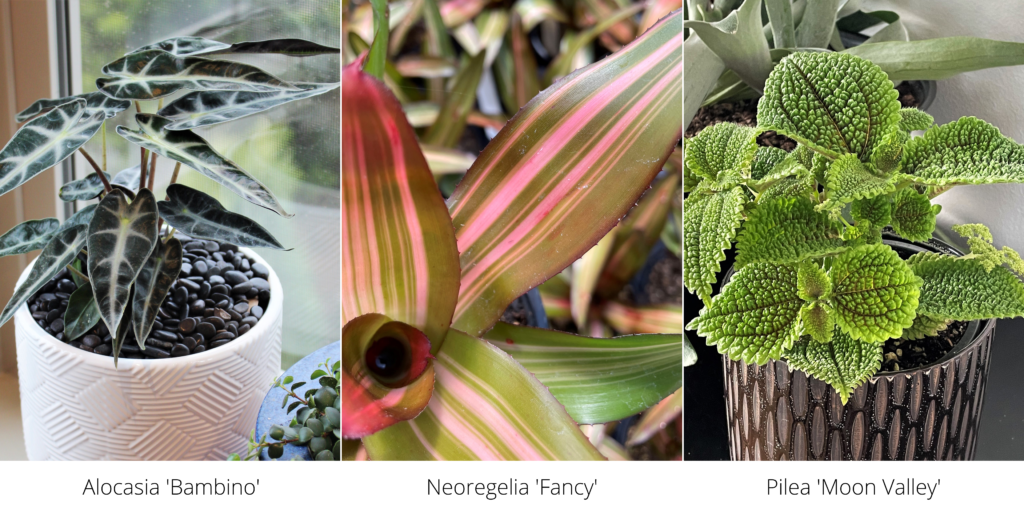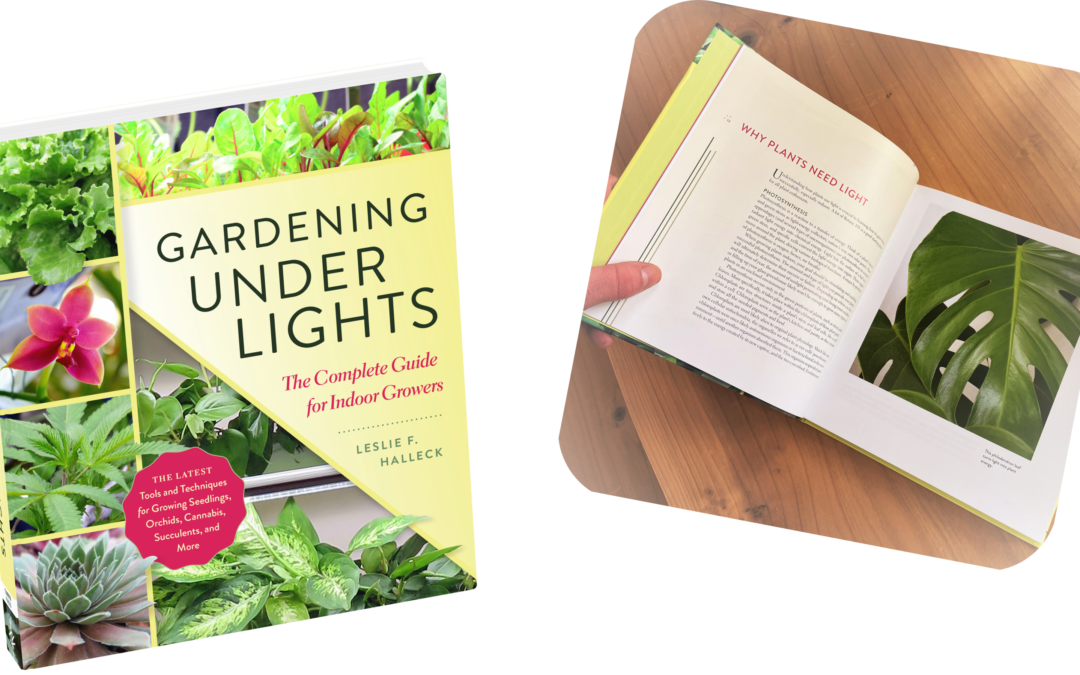Real Quick Ribbit
Key info about houseplant lighting:
- Know what your plant looks like when it’s healthy, so you know when it doesn’t look right.
- Take the tag instructions with a grain of salt, because the conditions in your home are unique. Experiment and move plants around.
- Consider all the factors affecting the intensity, quality, and duration of light all year long.
Lighting: The Key to Healthy Houseplants
Many of the care instructions for indoor plants are full of terms such as “bright, indirect light”, which may seem like a contradiction to, well, anyone. It’s worth it to solve the lighting puzzle, though, because if we were to name one thing that most influences whether your houseplants are truly happy and growing, rather than merely existing, it’s light. Here are some tips to help you provide the best light for your photosynthesizing friends.

Houseplant Lighting Lingo to Know
First things first. Learn the lingo so you know how to decode plant tags and descriptions. Here are some key terms:
- Intensity: This has to do with the spectrum of light that plants use to photosynthesize. Check out Leslie Halleck’s book Gardening Under Lights for a more in depth look at how plants react to different wavelengths of light.
- Quality: Do you have a curtain that blocks some or most of the light? Is there a large tree or bush outside the window? Or perhaps you haven’t washed your windows in some time? Filtered or dappled sunlight will not supply your plants the same amount of energy.
- Duration: This is exactly what it sounds like- how many hours per day does your plant receive light? Duration of sunlight changes dramatically during winter months, especially in Northern regions.
- Exposure: Which direction does the window face- North, South, East, or West? The sunlight coming through your west-facing window in the afternoon is more intense than the light that shines through an east-facing window in the morning.
- Direct vs. Indirect: Direct light is light that shines directly on the plant. This could be a sunbeam shining in through a window or the light from a lamp. Direct light means the plant is placed on (or very close) to an uncovered windowsill, soaking in all the rays. Indirect light refers to the ambient light surrounding the window, the further away from the window the plant is placed, the less light it’s able to absorb.
Make a Light Map
What gets light when, and how much? Every square foot of your house has slightly different light conditions. To fully understand the conditions affecting light in your home, you will need to observe how the light changes over the course of a year. (But you can start with what’s available now to give your new plant the best home within your home.)

There are many factors that can obscure or alter the quality of light from coming in through your window: curtains, screens, blinds, awnings, trees, other plants in the windowsill, or even a dirty windowpane. The angle of the sun’s rays changes significantly depending on the season, and this especially affects light shining in through north and south facing windows. There are some external factors that can even increase light exposure, such as the reflection of sunlight on a body of water or bright white wall. If your window’s blocked by a deciduous tree (loses its leaves in the winter), you may get more sun through that window in the winter than in the summer!
Houseplant Recommendations for Every Type of Light
Once you’ve identified the type of light available you can select plants that will thrive in those light conditions.
Houseplants for Low Light: Cast Iron Plant (Aspidistra elatior), Haworthia spp., Snake Plant (Sansevieria spp.)
Site specifics: You’ll usually find low light conditions near windows with a northern exposure and in areas of a room that are farthest away from the windows. In the northern hemisphere during the summer, your north-facing windows may get enough light to keep some plants happy.
Watch out for: Overwatering. The less light a plant receives, the longer it will take to dry out. It’s usually best to err on the side of underwatering, especially for plants in low light conditions.

Houseplants for Medium-low Light: Peperomia spp., Air Plants (Tillandsia spp.), Calathea spp.
Site specifics: Usually found near east facing windows and toward the middle of western or southern facing rooms.
Watch out for: Plants leaning towards a light source or looking stretched-out and “leggy”. If your plant does that, it’s a sure sign that it needs more light.

Houseplants for Medium-high Light: Pilea spp., Elephant Ears (Alocasia spp.), Bromeliads (Neoregelia spp.)
Site specifics: Find this type of light in southern facing windows, very close to the window. Southern sunlight is very bright and long-lasting, especially in the summer.
Watch out for: Sunburn on leaves right next to the window, especially in the warmer months.

Houseplants for Intense High Light: Jade (Crassula spp.), Echeveria spp., Variegated Rubber Tree (Ficus elastica ‘Tineke’)
Site specifics: Find this type of light in southern facing and western facing windows. Plants on an uncovered west-facing windowsill are bathed in sunlight during the hottest part of the day.
Watch out for: Wilting, shriveled, or discolored foliage. Depending on your climate, you may need to move your plants out of direct western exposure during the hottest summer months.

Houseplant Problems? Maybe it’s the light!
Take the cue: what is your plant telling you?
Even taking all the factors above into consideration, your best bet for a happy indoor plant is learning how to recognize the symptoms of an unhealthy plant and adjusting the growing conditions accordingly. Plants have a limited means of expressing their discontent- wilting, discoloration, leaf-drop and stunted growth are all symptoms which may have multiple causes. When you first purchase your plant from Little Prince of Oregon Nursery, you’ll have a baseline for what that plant looks like when it’s healthy and thriving. After bringing your plant home, keep a close eye on how it reacts so you can tweak the environment as needed. Here’s some common symptoms caused by incorrect light, and ways to remedy them:
Stretched-out plants
You could say these plants look “leggy.” The horticultural word for this is phototropism. That describes what happens when plants stretch towards a light source. Leggy, stretched-out plants have elongated internodes (the space on the stem between the leaves). If you notice this phenomenon, in conjunction with other symptoms such as faded leaf color, chances are that your plant is not receiving enough light.

Solution: Move to an area with more light. Be careful, though! Don’t just move a plant from a dark corner to a windowsill where the sun will shine directly on it all day long. Gradually increase the light until you find the plant’s happy place.
No Flowers or Fruits – And When There Should Be
Many houseplants won’t produce flowers or fruits until they are large or have been growing in your house for many years. For example, Sansevieria plants WILL flower eventually if they have the right conditions, but that’s not why you purchase and grow these plants and you shouldn’t really expect flowers. If you’re growing Gloxinia, on the other hand, you should expect flowers, and if you’re not seeing them within an entire cycle of growing seasons, there’s an issue.
Solution: Move to a place with more light. Flowering and fruiting is how plants reproduce, and reproduction requires a ton of energy via photosynthesis. If you have a houseplant that isn’t blooming when it should, make sure that it’s getting enough light before you reach for the fertilizer. If your plant is getting plenty of light but it’s still not enough to produce flowers, you may want to consider using a grow light. Check out Leslie Halleck’s book Gardening Under Lights for a very thorough explanation of supplemental lighting for all kinds of indoor plants.

Wilting, Leaf curl, and Sunburn
All these symptoms can be caused by too much intense hot light, but they can also be caused by disease or a drastic change in growing conditions. For example, if you take a plant that was acclimated to indirect eastern exposure and plop it down into a south-facing windowsill, it will likely burn or wilt. If you decide to adjust your plant’s lighting exposure, do it gradually to allow time for the plant to acclimate (winter is a great time to experiment!)

Solution: Carefully snip off the sunburned, wilted, or curled leaves at the point where the leaf meets the plant stem. Keep an eye on the plant to ensure that new leaves aren’t becoming sunburned. If they are, move the plant to an area with less light.
